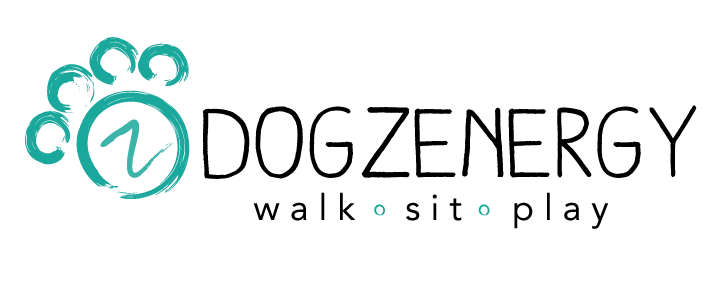 Learning how to read your dog's body language will open up a whole world of communication between you and your dog. Remember that with positive reinforcement training, you are always looking for all of the positive things that your dog does and rewarding that behavior with praise, treats, toys or life rewards. Therefore, you must always be one step ahead of your dog to set him up for success and to show him what you want him to do instead of just reacting to what he does.
Being one step ahead of your dog means “seeing” things before your dog does and also appropriately responding to your dog’s body language before he becomes overly excited or stressed out by a stimulus. For example, if you are working with a leash reactive dog, you must always be aware of your environment and your dog's body language. Where their eyes go, their bodies follow. Where their ears perk up to the body will follow. If a dog licks his lips, yawns, pants excessively, salivates, lifts a paw, shakes off, ducks his head, puts his ears back, tucks his tail or raises his tail and wags it stiffly, these are all signs that your dog is experiencing a stressful response to stimuli in his environment. Capturing your dog’s attention before his body language reads, “I’m completely stressed out and overwhelmed,” and then redirecting his attention by taking the lead and showing your dog what you want him to do instead will alleviate his stress. By learning your dog’s body language, you will be more successful in being a benevolent, calm and confident leader.
Learning how to read your dog's body language will open up a whole world of communication between you and your dog. Remember that with positive reinforcement training, you are always looking for all of the positive things that your dog does and rewarding that behavior with praise, treats, toys or life rewards. Therefore, you must always be one step ahead of your dog to set him up for success and to show him what you want him to do instead of just reacting to what he does.
Being one step ahead of your dog means “seeing” things before your dog does and also appropriately responding to your dog’s body language before he becomes overly excited or stressed out by a stimulus. For example, if you are working with a leash reactive dog, you must always be aware of your environment and your dog's body language. Where their eyes go, their bodies follow. Where their ears perk up to the body will follow. If a dog licks his lips, yawns, pants excessively, salivates, lifts a paw, shakes off, ducks his head, puts his ears back, tucks his tail or raises his tail and wags it stiffly, these are all signs that your dog is experiencing a stressful response to stimuli in his environment. Capturing your dog’s attention before his body language reads, “I’m completely stressed out and overwhelmed,” and then redirecting his attention by taking the lead and showing your dog what you want him to do instead will alleviate his stress. By learning your dog’s body language, you will be more successful in being a benevolent, calm and confident leader.
At the same time that your dog is giving you cues with his body, he is also responding to the cues that you are giving him with your own body. Are you stiff? Did you tighten up on the leash, back away, pull away or clench your jaw? Did you suck in a deep breath? Are you staring at something intently? These are all stress signals from a human that your dog is very attuned to reading. Just remember, 90% of human communication is through body language and merely 10% is oral language. We are speaking to our dogs with our bodies all the time.
So what does a happy, relaxed, calm dog look like? Posture is balanced, comfortable and steady. Eyes are bright, but not fixed on one thing too intensely. Tail is held low and wagging with long sweeps or circles (unless the dog is a breed with an upright tail). The dog is breathing regularly and evenly, and sometimes dogs even "laugh" with a type of snorting and breathing sound when they are playing or happy to see you when you get home. Ears should be relaxed or forward. A happy dog trained with positive reinforcement methods, who trusts his owner and has all of his basic needs met will watch his owner's every move, ready for the next fun adventure. Whether it's just another tummy rub, playing his favorite training game, running on the beach, fetching his owner's shoes or going for a car ride to do errands, a happy dog's body language reads, "I'm ready to have fun and I'll do whatever you say because I trust you!"
